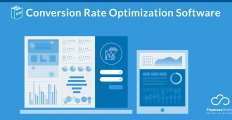
Source: pexels.com
Organizations are increasingly relying on software and digital tools to carry out day-to-day operations efficiently. Companies in the property management sector are no exception.
Based on a recent industry report published by Strategic Market Research, the Property Management Software Market is expected to reach $2.82 billion in 2030 at a CAGR of around 5.73%. This is a steady growth coming from the recorded $1.56 billion market value in 2020. The demand for software-as-a-service solutions (SaaS) was cited as the number one driving force behind the growth.
We’ve been seeing a lot of coverage on the growth and demand for SaaS products when it comes to business technology and cloud computing. Travel SaaS platforms, for instance, are expected to surge now that the world is open once again for travel. Vendors serving the healthcare industry are also set to make good strides in their business, thanks to the high demand for SaaS healthcare products.
Travel, healthcare, property management—and practically any other sector implementing SaaS—are doing so for the same business benefits. These include efficiency, flexibility, scalability, and cost savings. The report cited that 70% of CIOs turn to SaaS for its scalability and agility, 38% use it to enhance disaster recovery, and 37% adopt SaaS to improve their flexibility.
While many organizations also maintain a hybrid cloud approach, it would just be difficult to achieve all the SaaS benefits we mentioned through legacy on-premise software. This is why SaaS is projected to comprise 75% of the workloads and workstations for cloud computing by the end of 2022. Simply put, organizations are shifting to SaaS because it works.
Factors Bolstering SaaS Growth in Property Management
Property owners, managers, and companies engaged in property management are all familiar with the challenges inherent in the business. From lead generation to resource management, employee scheduling, taxes, and compliance, it’s challenging to keep tabs on every aspect of property management without the help of technology.
As the report explained, property management software allows people involved in property management to work more efficiently, thanks primarily to workflow automation features included in software products. Moreover, other key features commonly found in property management systems such as accounting, reporting, lease management, and tenant/owner portals all support users in getting tasks done faster and with increased accuracy.
These findings align with property management trends as well. A post-COVID era of work now emphasizes remote work, increasing the reliance of property management companies on cloud-based SaaS solutions that provide the capabilities their teams need to collaborate with ease and work from any location. Additionally, complete SaaS property management platforms also provide convenience to potential buyers or tenants through a broad range of services found in a single app. Examples of these digital services include online payment of rents, property maintenance, virtual leasing or virtual tours, and tenant screening.
According to the report, the Residential segment remains the biggest user of SaaS property management solutions with an estimated share of approximately 70.23% and is likely to continue being the top segment throughout the forecast period. Meanwhile, the largest market by region is North America with a maximum share of nearly 65.58%. But when it comes to growth, Asia-Pacific is the fastest region with a CAGR of around 7.17%.
Overall, property management SaaS solutions will enjoy the same growth as the entire industry it belongs to. However, just like with any other software product, vendors should keep in mind ease of use and integration. Users are always on the lookout for SaaS platforms that are intuitive, easy to learn, and connect seamlessly with other business apps that are already part of their tech stacks.






















Leave a comment!